Free Shipping On All Orders
Basement Home Gym 2024: Essential Tips for Your Ideal Workout Space

Basement home gyms have become increasingly popular, and it’s easy to see why. Having a workout space right in our own home provides us with convenience, privacy, and the ability to personalize our fitness routine to suit our specific needs. In addition, a basement gym is an excellent way to make use of unused space, allowing us to keep our living areas clutter-free.
Setting up a basement home gym can be as simple or elaborate as we want it to be. From basic weight training equipment to state-of-the-art machines, there are countless options available to create the ideal fitness space tailored to our preferences. Plus, designing our gym in the basement allows for easy expansion as our fitness journey evolves, ensuring that we’ll always have room to grow and improve.
By carefully planning and organizing our basement home gym, we can create a functional, stylish, and motivating space that encourages us to stay committed to our fitness goals. With easy access to our own workout haven, the barriers to achieving a healthy lifestyle are significantly reduced.
Why Choose a Basement Home Gym
We all know how important it is to stay active and maintain a healthy lifestyle, and having a basement home gym can be a convenient and effective way to achieve that goal. But why should you choose a basement home gym over other options? Let us explain the reasons.
First of all, a basement home gym offers privacy and convenience. We can exercise in the comfort of our own home, on our own schedule, without worrying about crowded gyms or strangers watching us work out. With a basement gym, we are in control of our environment, and we can set it up to meet our personal fitness goals and preferences.
Another benefit of a basement home gym is temperature control. Basements tend to stay cooler than other parts of the house, which means they are perfect for working out, particularly during hot summer months. This can help us avoid having to pay for expensive air conditioning to keep our workout area cool, saving us money in the long run.
A significant aspect of a basement gym is that it allows us to spend more quality time with our family. When we work out at home, we can be around for our kids or our spouse, while still focusing on our fitness goals. This means we can be more present in our family life and balance our fitness routines with our personal and work life.
Basement gyms can also save us money on gym membership fees and commuting time. Not to mention that it eliminates the need for regular gym equipment maintenance, as mentioned in this garage gym experiment article. Plus, having a home gym means no more waiting for our favorite machines or dealing with other gym-goers who may not have the same courtesy or level of hygiene that we prefer.
However, before diving into creating a basement home gym, we should be aware of some potential challenges. Ceiling height and moisture levels are crucial factors to consider, as mentioned in the garage gym experiment guide. It’s essential to ensure that our basement space is suitable and comfortable, and that we take appropriate measures to prevent any potential problems.
Designing Your Basement Home Gym
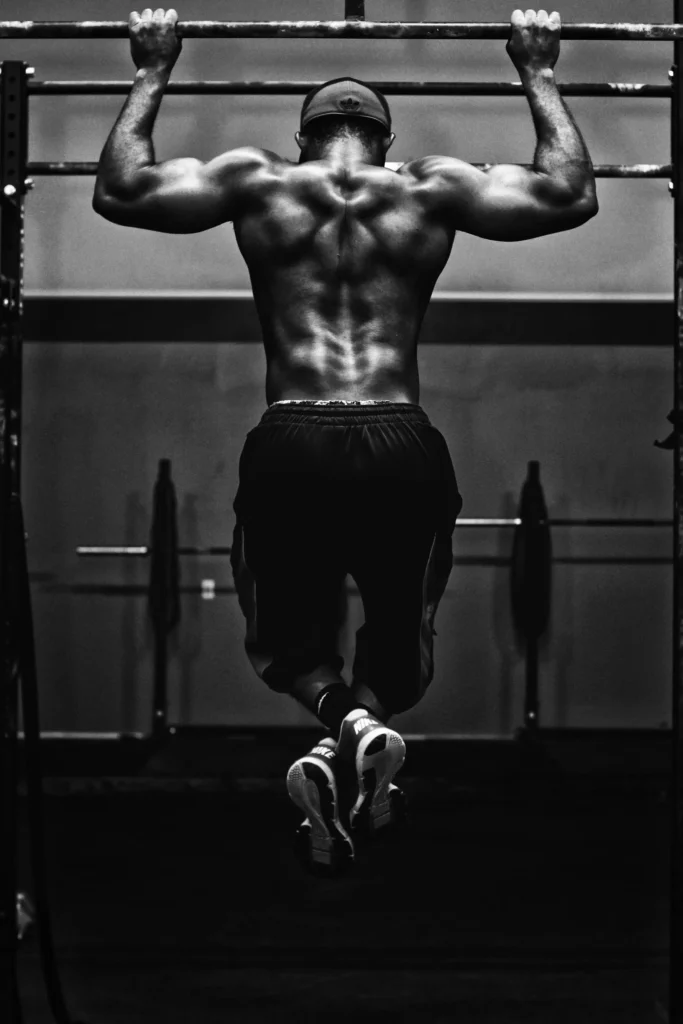
Creating a basement home gym is an excellent way to prioritize your health and wellbeing, without having to step foot into a crowded gym. With the right planning and equipment, you can transform your basement into a functional and enjoyable workout space. In this section, we’ll cover the equipment needed, implementing safety measures, and maintaining your home gym equipment.
Equipment Needed for a Basement Home Gym
A well-equipped basement home gym should cater to your fitness goals and preferences. When selecting the equipment for your gym, consider the following:
- Cardio Equipment: Treadmills, ellipticals, and stationary bikes can help you get your heart rate up and burn calories.
- Strength Training Equipment: Weight benches, dumbbells, and barbells are essential for building muscle and toning your body.
- Functional Training Equipment: Resistance bands, stability balls, and kettlebells allow for a variety of exercises that improve strength, flexibility, and balance.
- Yoga and Stretching Equipment: Invest in a quality yoga mat and foam roller to help with stretching, recovery, and mindfulness practices.
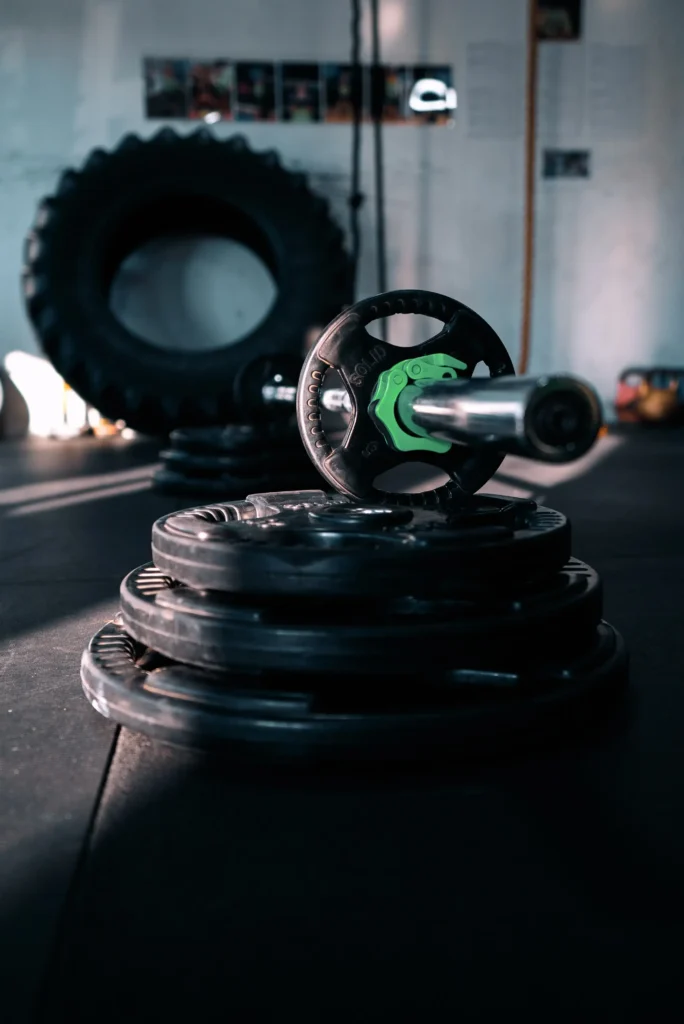
Implementing Safety Measures in Basement Home Gym
Safety should be a top priority in any home gym. To ensure a safe workout environment within your basement, keep these tips in mind:
- Space and Layout: Ensure ample space for each piece of equipment and exercise movement to prevent accidents or injuries.
- Flooring: Install rubber flooring or mats to provide cushioning, prevent slipping, and protect your basement floor from damage.
- Ventilation: Proper air circulation is essential to maintain a comfortable workout environment. Consider installing fans and ensuring proper ventilation within your basement.
- Mirrors: Large mirrors help monitor your exercise form, reducing the risk of injury by maintaining proper technique.
Maintaining Your Home Gym Equipment
To get the most out of your basement home gym, it’s important to keep your equipment in good working order. Follow these maintenance tips:
- Clean Regularly: Wipe down equipment surfaces after each use to prevent sweat and grime buildup.
- Lubricate: Moving parts such as treadmill belts, bike chains, and weight machine cables require regular lubrication to prevent wear and tear.
- Inspect for Damage: Regularly check for any signs of damage, such as frayed cables, loosened bolts, and cracked equipment. Address any issues immediately for safety and optimal performance.
Advantages of a Home Gym in Basement
If you are thinking of setting up a home gym, a basement is an excellent location to consider. With the vast home gym basement benefits, you’ll transform this often-underutilized space into your fitness sanctuary. Let’s cover some of the top advantages of creating a home gym in your basement.
One of the primary benefits of a basement home gym is the temperature control. Basements are generally cooler than above-ground floors, providing a comfortable environment for your workouts. This cooler atmosphere can be especially advantageous during hot summer months when exercising can feel unbearable.
Another key advantage of a basement gym is the dedicated workout space it offers. With a separate area for your fitness equipment, you won’t have to worry about constantly rearranging your living room or bedroom to make room for a workout. You’ll also have extra space for larger equipment, such as treadmills or weight machines, as well as more options for customization. Basements typically have a concrete foundation, making it suitable for handling heavier equipment without causing damage.
A home gym in the basement can lead to more family time as everyone in your household can easily access this fitness space. With a shared space, it encourages family members to engage in physical activity together, promoting a healthier lifestyle for everyone involved.
Lastly, a basement home gym provides more privacy than a public gym. You can exercise at your own pace without feeling self-conscious or judged by other gym members. Plus, you’ll never have to wait in line for a machine or deal with crowded locker rooms.
Considerations and Challenges in Setting Up a Basement Home Gym
Transforming your basement into a functional and efficient home gym is a fantastic way to create a personalized workout space. However, there are several factors to consider and challenges to overcome when designing your perfect basement home gym. In this section, we’ll explore how to get the most out of your basement home gym and offer some helpful tips and insights.
Getting the Most Out of Your Basement Home Gym
Space and Layout Considerations: One of the main challenges in setting up a basement home gym is working around limited space and low ceilings. Be sure to measure the dimensions of your basement and choose equipment that fits comfortably. Opt for foldable, wheeled, or all-in-one exercise machines to maximize space and make storage more accessible.
Ventilation and Moisture Control: Basements can sometimes suffer from poor ventilation and higher humidity levels, which can be harmful to both your health and your gym equipment. Installing exhaust fans, using dehumidifiers, and ensuring proper air circulation can help create a comfortable workout environment and prevent moisture-related damage.
Lighting and Ambiance: Basements can be dark and uninviting, and brightening up the space with suitable lighting can make your workouts more enjoyable. Consider installing overhead fixtures, floor lamps, or even natural light sources (such as egress windows) to bring more light into your space. Additionally, mirrors and motivational posters can help create an inspiring atmosphere.
Flooring and Protection: Proper flooring can make a significant difference in the overall comfort and safety of your basement home gym. Options like interlocking foam tiles, rubber mats, or even dedicated gym flooring can help to protect your floors, provide cushioning during workouts, and dampen noise.
Investing in Quality Equipment: When choosing equipment for your basement home gym, focus on quality rather than quantity. High-quality equipment can be expensive, but investing in durable and versatile pieces will ensure your workout space remains functional and enjoyable in the long run. Pay attention to return policies and warranties when making purchases.
By carefully considering these factors and addressing potential challenges, you can create a basement home gym that offers an enjoyable and effective workout space tailored to your needs.
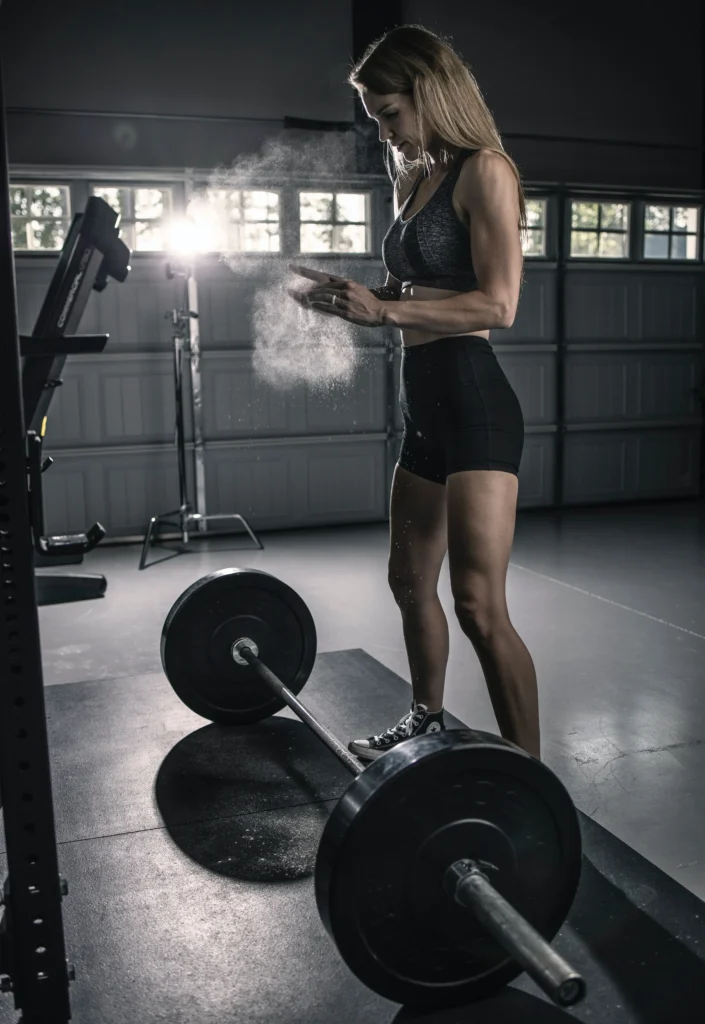
Our Opinion on Basement Home Gyms
As fitness enthusiasts, we always appreciate a good workout space, and what better place to create one than in the comfort of our own home? A basement home gym offers the perfect solution for those who want to exercise without having to leave the house. In our opinion, having a basement home gym brings numerous advantages, including convenience, privacy, and flexibility.
One of the main reasons we love basement home gyms is the convenience they provide. A workout space in your own home means you can exercise during any free time, without having to travel to a local gym or fitness center. Especially during times when the weather is uncooperative, having that gym just downstairs saves us a lot of time and hassle. Some basement gyms even provide a unique “commuting” mindset that allows you to get into the zone for your workout while still being at home.
Another advantage of a basement home gym is the privacy it offers. Let’s face it, working out in a public gym can sometimes be intimidating, especially for beginners or those who don’t feel comfortable exercising in front of others. With a basement gym, you can set up your workout space just the way you like it, and enjoy the privacy of working out alone or with close friends.
Creating a basement home gym also allows for flexibility in designing and organizing the space. With the ability to choose equipment that suits our personal fitness needs and goals, we can tailor the gym to meet our individual preferences. Additionally, having a dedicated workout area opens up possibilities for expanding the space or adding more equipment in the future.
However, it’s essential to consider certain factors when setting up a basement home gym, such as adequate space, proper lighting, and ventilation. Ensuring the area is spacious enough to accommodate various workout positions and equipment, as well as providing good air circulation, is crucial for a comfortable and safe workout environment.
FAQ
Can I build a home gym in my basement?
Absolutely! A basement can be a great space for a home gym. If you’re considering it, start by assessing and cleaning the space, clearing out clutter, addressing any moisture issues, and installing appropriate flooring. Then think about the layout, lighting, and ventilation.
What type of equipment should I include in my basement home gym?
A treadmill, rowing machine, or stationary bike are excellent choices. You might also want to incorporate weight training tools like a home gym system, kettlebells, dumbbells, and barbells. Accessories such as stability balls, stretching mats, and foam rollers can be useful additions as well. Refer to this Life Fitness article for more ideas.
What kind of flooring should I use in my basement home gym?
The right flooring is essential for protecting your equipment and your home. Rubber or foam tiles can help absorb impact when performing exercises and can also improve the longevity of your equipment. Visit this garage gym experiment guide to learn more about choosing the best flooring for your basement gym.
How important is ventilation in a basement home gym?
To keep your basement gym’s air fresh, add vents or fans due to limited airflow. Maintain a comfortable temperature too, as basements can be cooler. Learn more about basement gym ventilation and its benefits in this article.
Remember, planning and customizing your basement home gym to suit your needs and preferences is a great way to ensure that you stay motivated and committed to your fitness journey. Plus you save a lot of time! What’s your opinion on a basement home gym? Let us know in the comments!


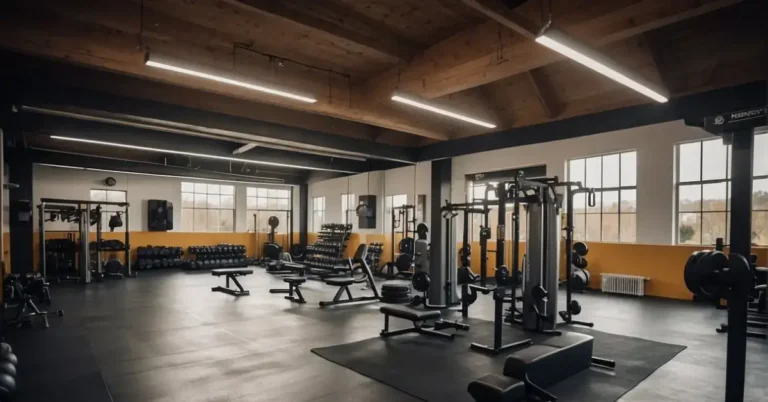
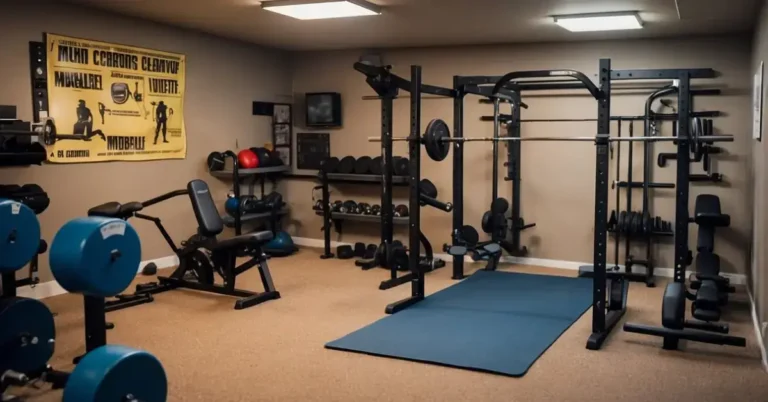
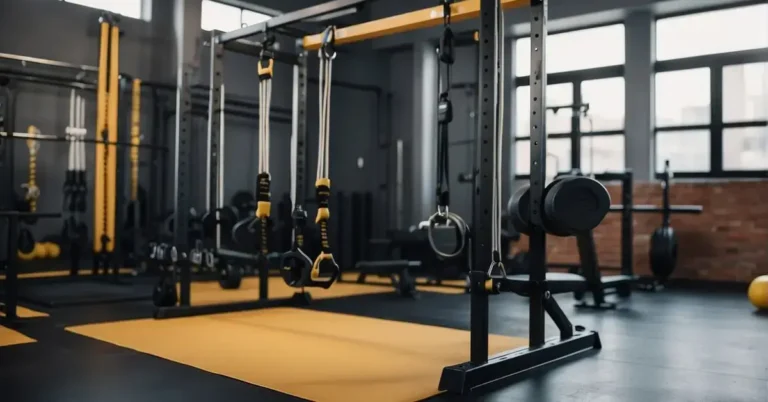
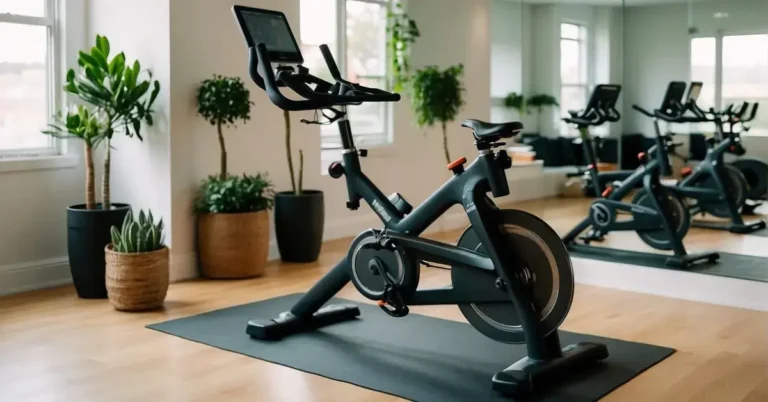
[…] functional, and cost-effective choice. So let’s lace up our Chuck Taylors, hit the gym, and continue rocking our Converse gym outfits with […]
[…] area while keeping your heart rate elevated. If you have more space you can consider building a basement home gym or even a luxury home […]
[…] you want to extend your total gym take a close look at our other articles. You can build a basement home gym or a luxury home gym and combine it with your total […]
[…] you are interested in developing your home gym, don’t forget to check out our articles on basement home gyms or luxury home […]